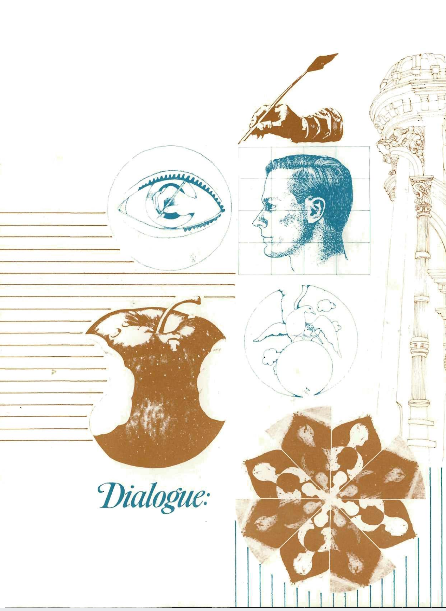Articles/Essays – Volume 11, No. 1
Windmill Jousting and Other Madness: Century 2
Jousting with windmills is a bit out of fashion nowadays, insanity even more so. But every now and then some glittering-eyed individual comes by with an idea most people do best to ignore.
Take Steve Piersanti, for example. In February of 1976, Steve decided that BYU needed a good student journal, an outlet for students seeking to break into print and a workshop for those interested in magazine editing and illustrating. Those-in the-know agreed with the concept, but they told him it was financially impossible. They explained that very few students would pay to read the thing. So, where would the money come from? Can any good come out of a student’s head? When Steve told them he planned on making the journal a professional-quality monthly, illustrated and edited by an all-volunteer staff of students—well, they dismissed him as an amusing but mad eccentric.
Despite knowing smiles and prophecies that the journal would “crash and burn,” Steve and his staff of about twenty (all as mad as he) worked thousands of hours that summer and through the following school year to establish Century 2 as a permanent part of the university. They persisted even when the project threatened not to crash and burn, but simply to die.
The struggle created a unique spirit of camaraderie: All those late-night proof reading parties and even later-night trying-to-meet-deadlines-with-the-aid-of-pizza from-Heaps-marathons. Having just been assigned our new office in the basement of BYU house for the third time in less than a year, we sometimes feel like dungeon mates resigned to living our lives in the dark.
But the struggle has produced results. The journal is a reality. We have had valuable help along the way. Robert Thomas and President Dallin Oaks gave us their full moral and promotional support. Many of the college deans and department chairmen encouraged their students to subscribe to the magazine. Don Norton as faculty advisor and teacher, gave help, as did Dean Bruce B. Clark and Chairman Richard Cracroft.
But the real work was done by Steve and his Sancho Panzas. All of us came to the staff with little or no idea of what publishing was all about. We simply knew that we liked the idea, hoping that the magazine would encourage a higher degree of academic and creative excellence at the “Y,” as well as prepare us for future work in editing and illustrating. Yes, we have made mistakes—plenty of them—but somehow the journal has survived. With eight issues behind us and three more in various stages of production, we find that the journal has a readership, albeit a small one, and a professional air to it.
We have great hopes for Century 2. Its name is meant to be significant: it was born in the first year of BYU’s second century and we hope it will greet the third. We hope it will help BYU students to think more clearly, write more effectively and live more perceptively. At this point, we have limited ourselves to material produced only by students from the Provo and Hawaii BYU campuses. (We are not, however, so inflexible as to refuse a significant paper sent to us from an LDS student at another school.) Occasionally we will print an interview with or a bibliography of a professional educator or artist, but we feel our unique role among the “Mormon magazines” is to provide students with the means to publish the best academic and creative work they can produce. Although we do not labor under the delusion that we have published all that is the best at BYU, we have published some of it. We are constantly searching for those “professional amateurs” who, perhaps unknown to themselves, are producing publishable work. The bulk of what we publish is first written for an honors seminar, a biology course or an English class, so we hope that professors will encourage their students to send their best work to Century 2.
We are not interested in printing only Mormon-oriented material; rather, as a quasi-official voice for the university, we seek simply to reflect the intellectual life of the BYU community. One may find within our pages an article on the Venus Flytrap, another on e. e. cummings, interviews with William Stafford and Clinton Larson, a research paper on Matsuo Basho or a short story about a missionary’s struggle with temptation. Since the journal is written, edited and illustrated by Latter-day Saints, we feel that LDS values will pervade everything we do. We have been pleased with the latitude allowed us by the powers that be, and we seek to fulfill their trust in us by publishing a tasteful and responsible journal.
So we’ve been jousting with windmills for a year now. In spite of the bruises, we still find a certain mystery and wonder in our work. We still worry about where the money is going to come from. We still fluctuate between hope and despair at the slowness of BYU students to read the magazine and contribute their work to it, at the loss of both Steve Piersanti and Mel Thorne (our courageous managing director and our patient editor-in-chief) who have graduated.
But—what the flip. The sun is in front of us, our pencils are sharp, and at our backs is a group of editors and illustrators as lunatic as we are.


 Back to full Issue
Back to full Issue

